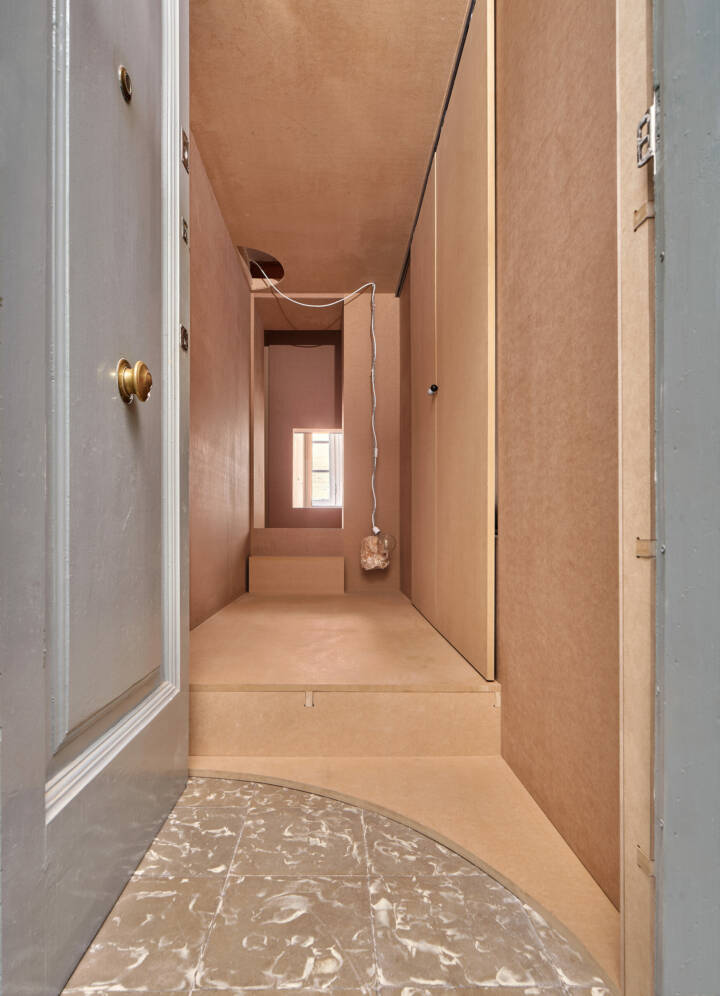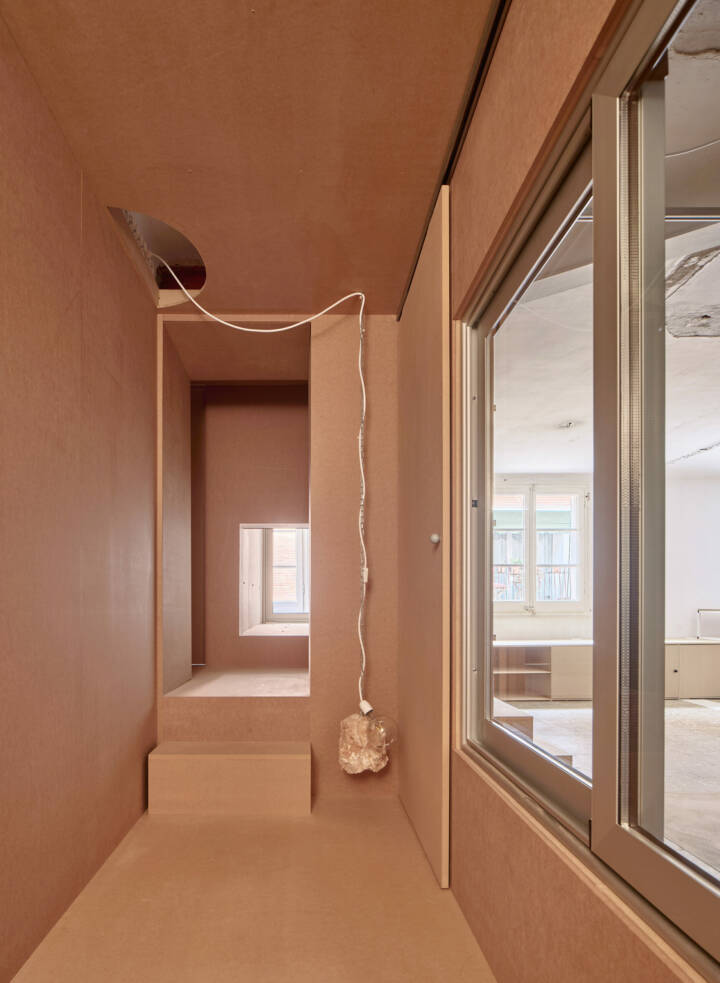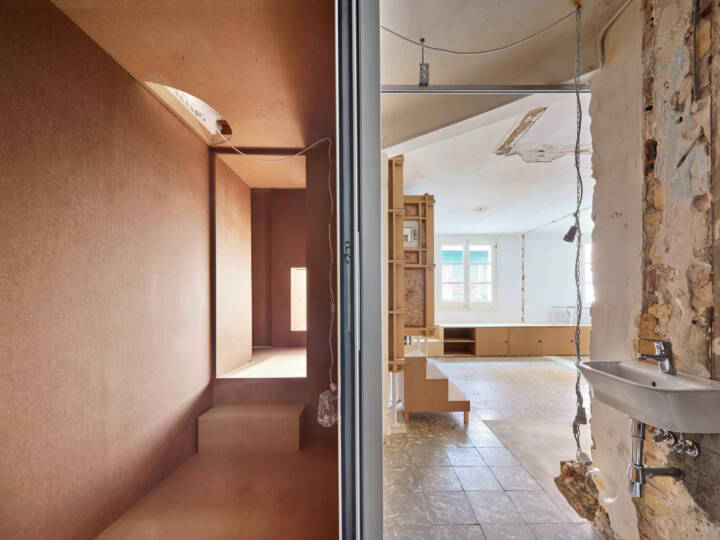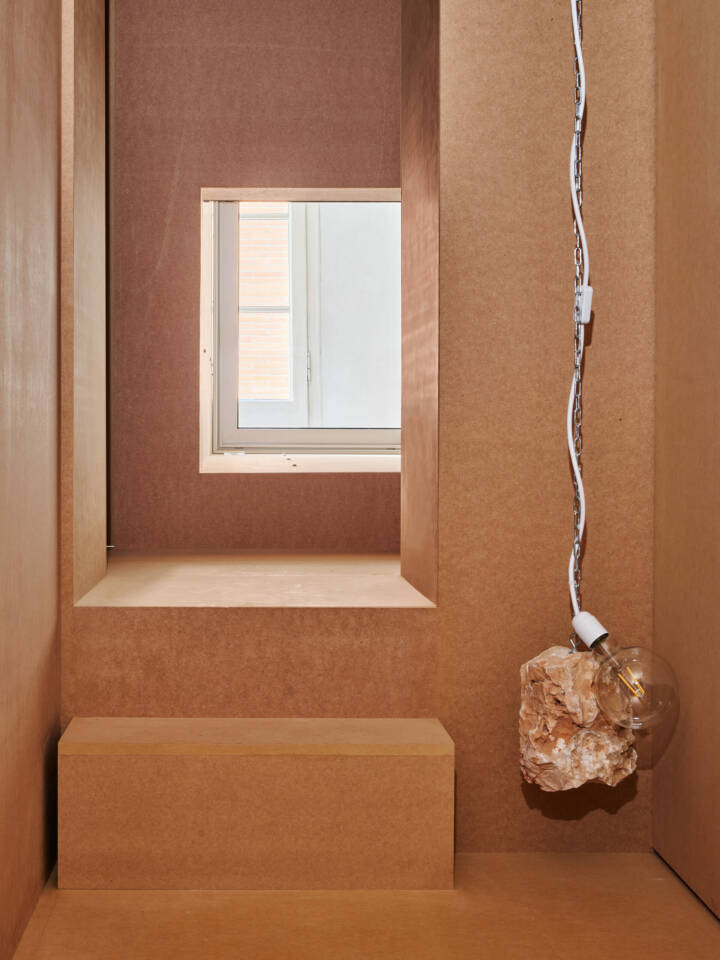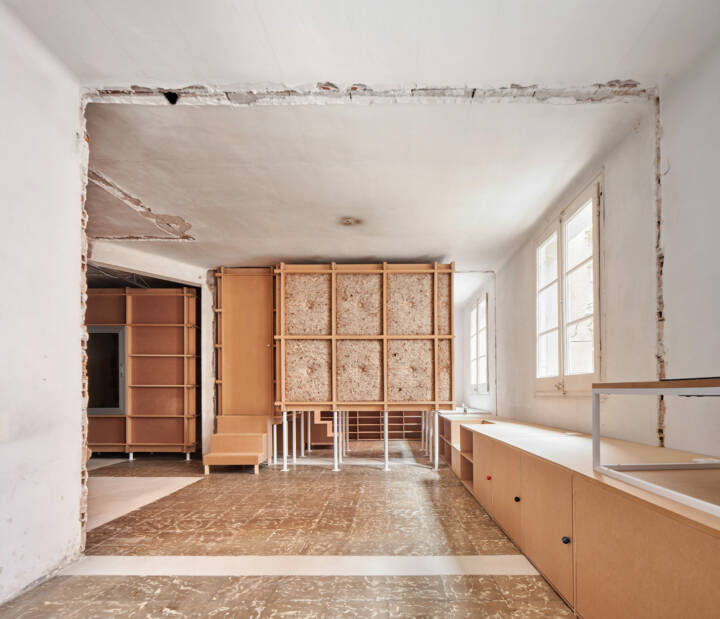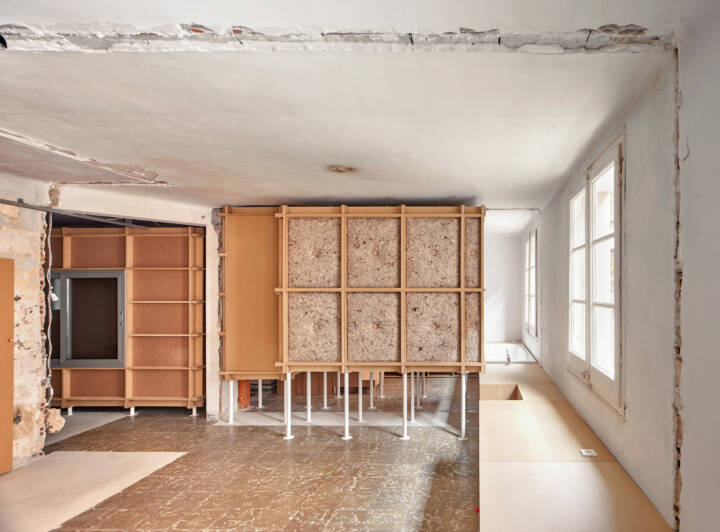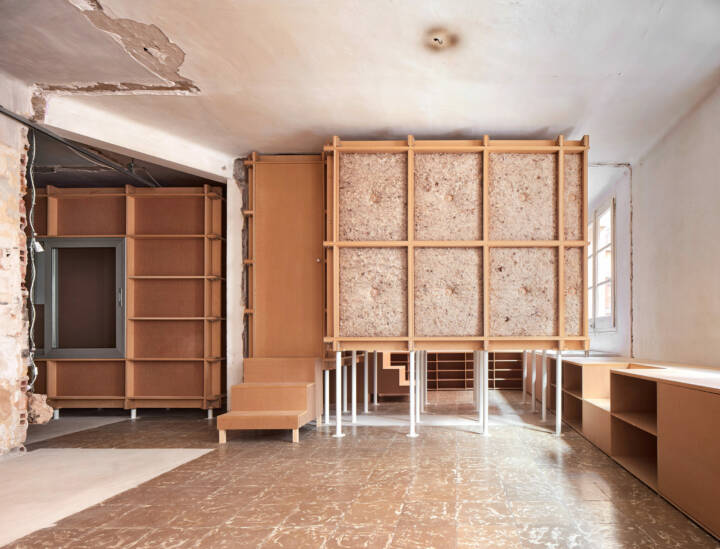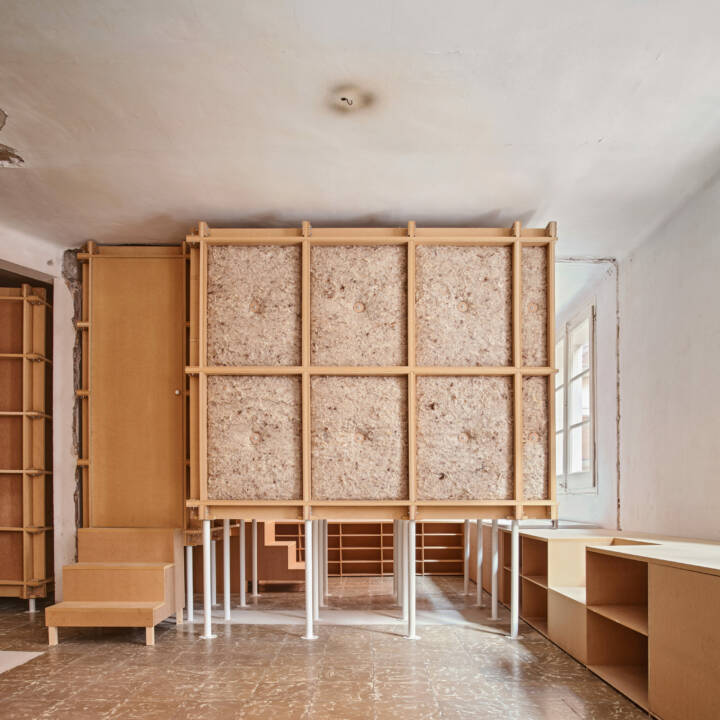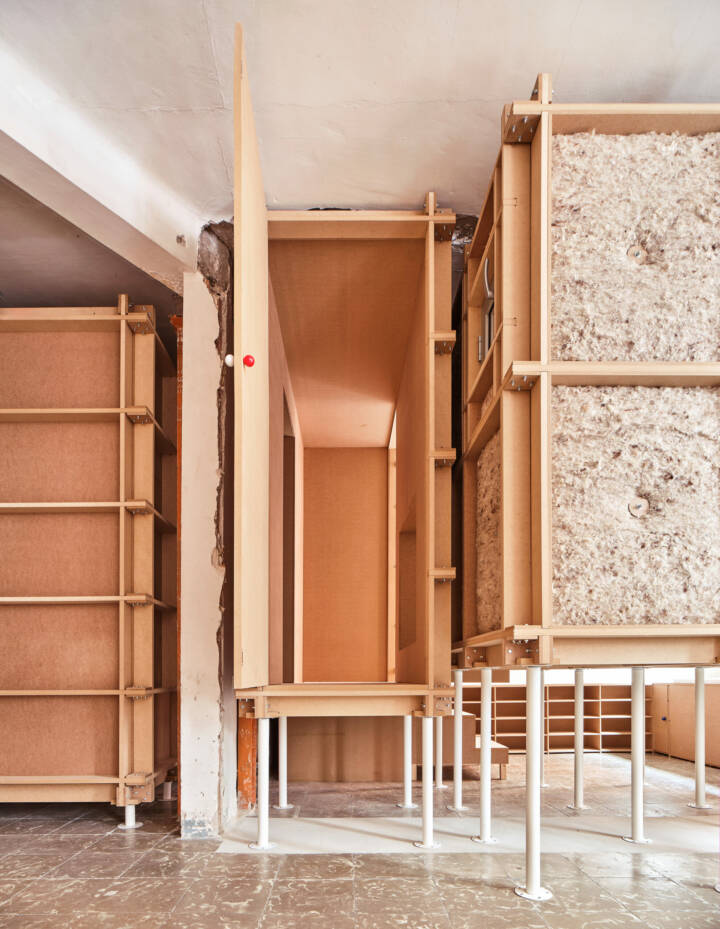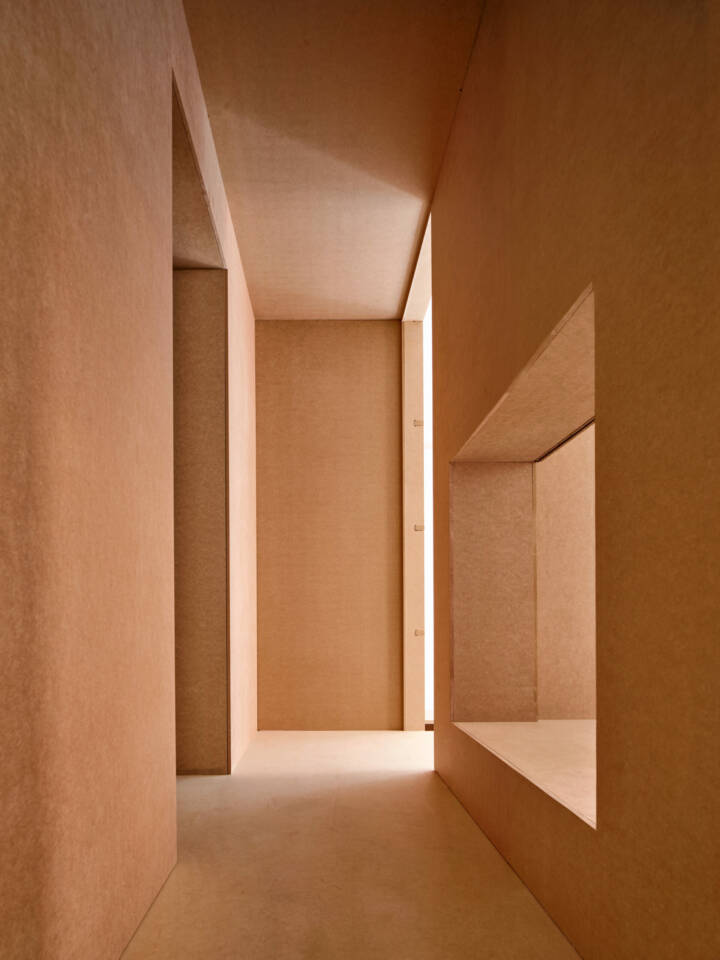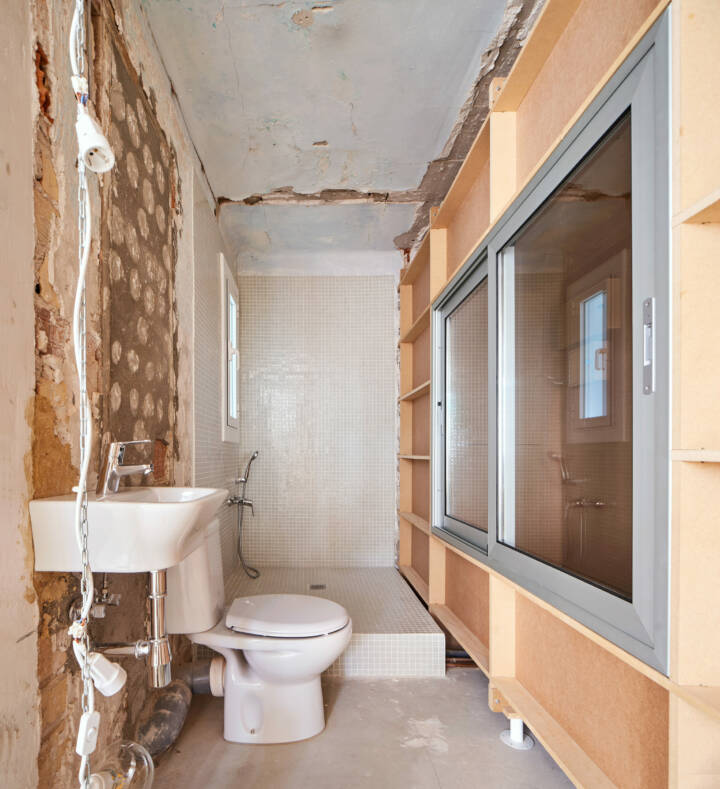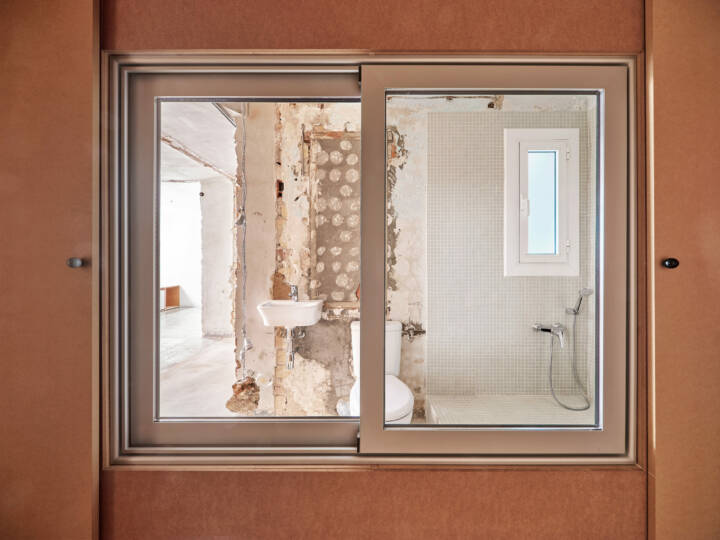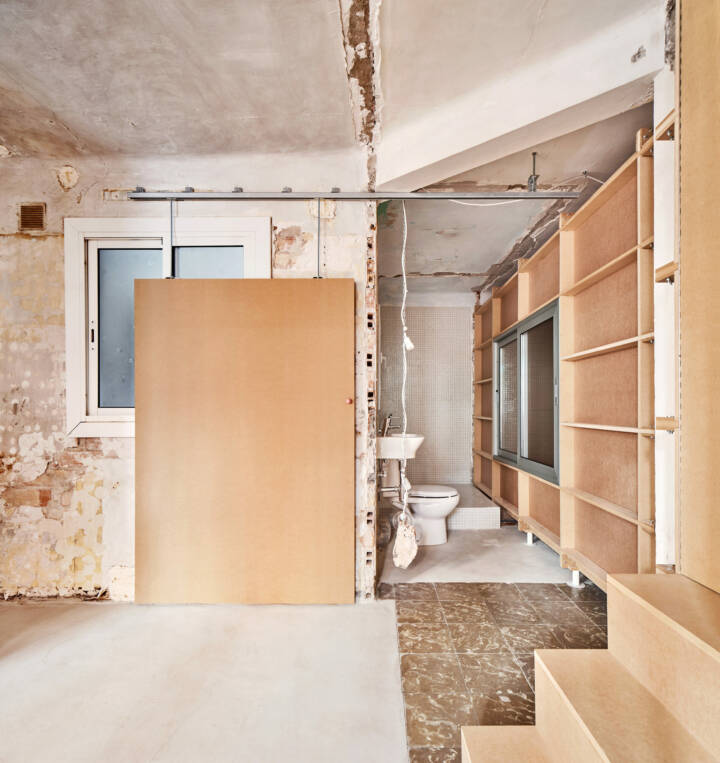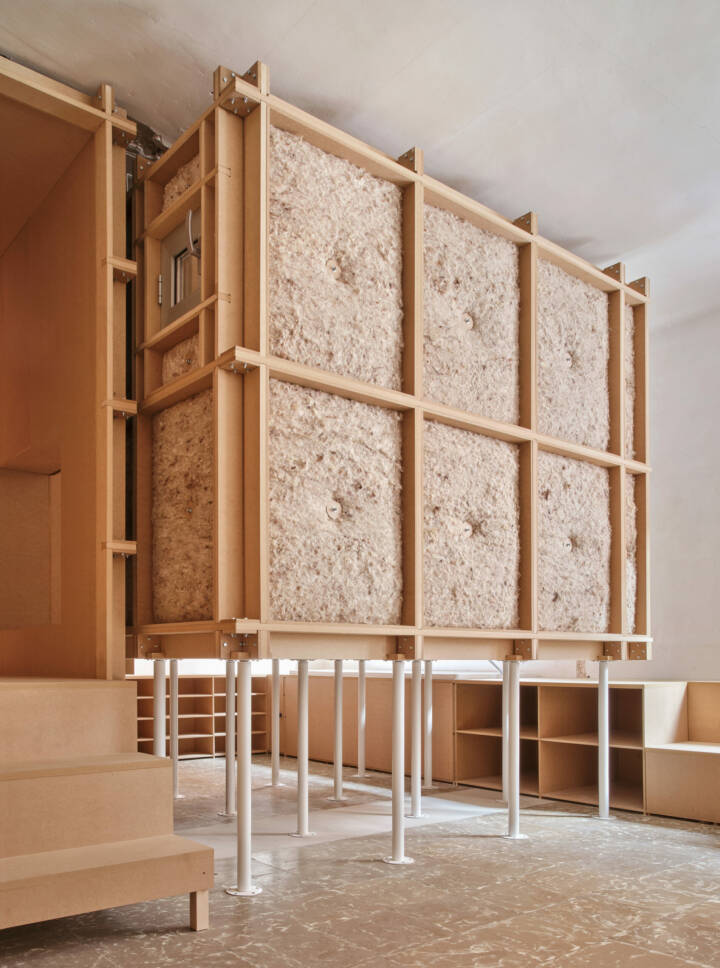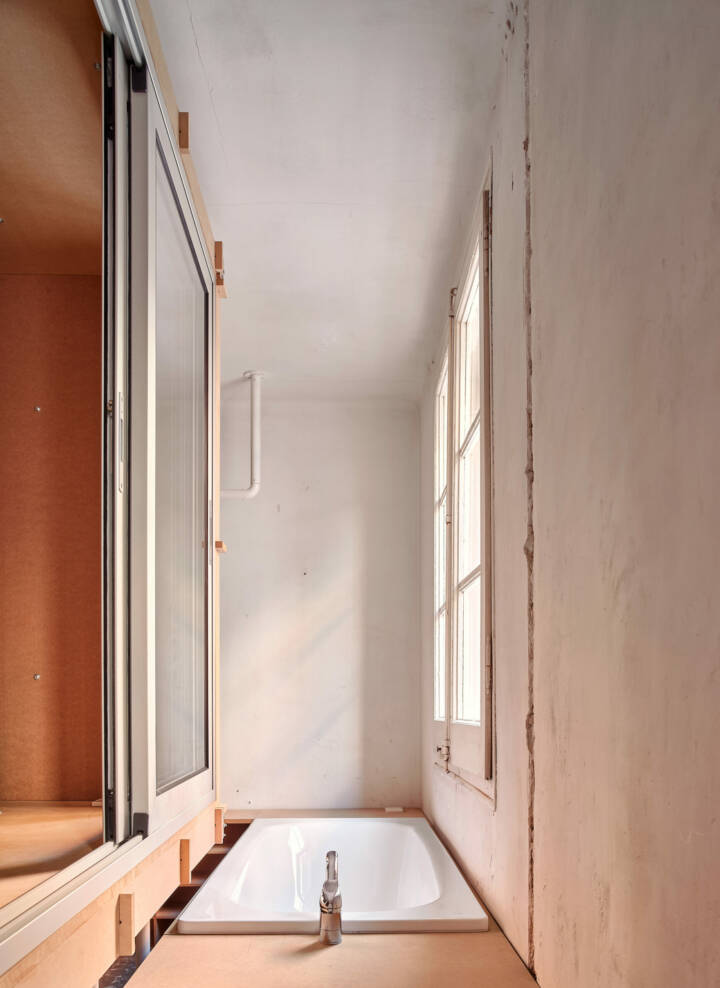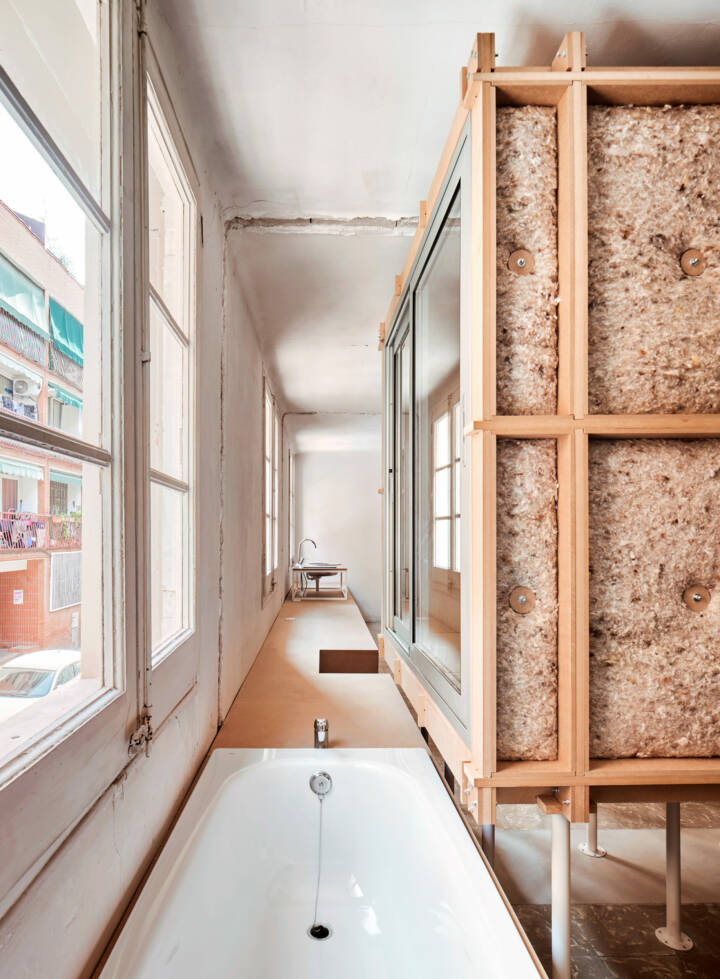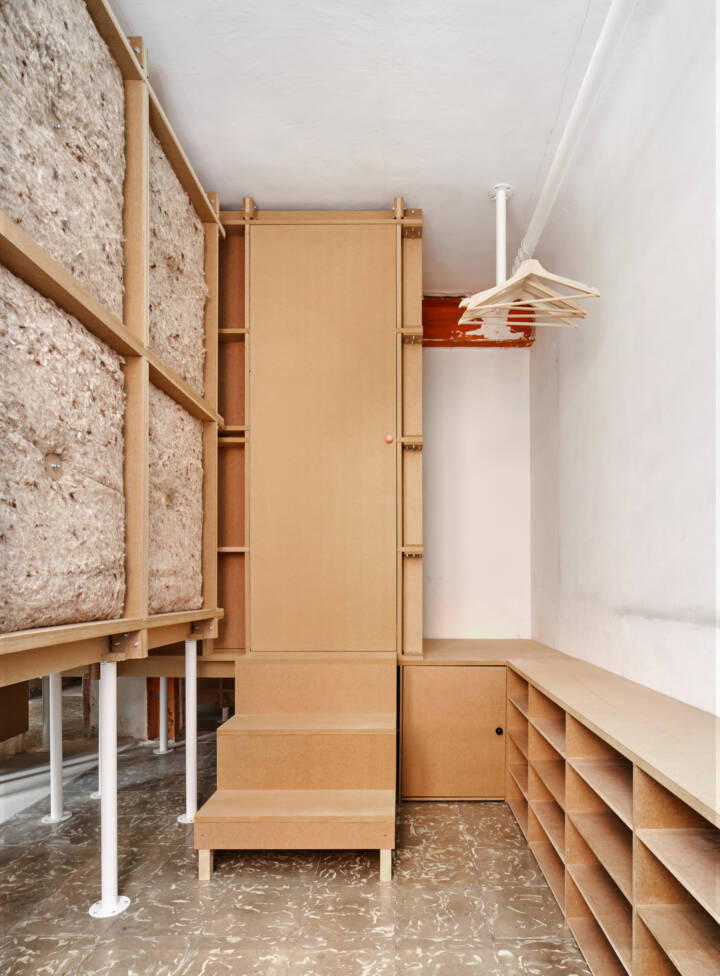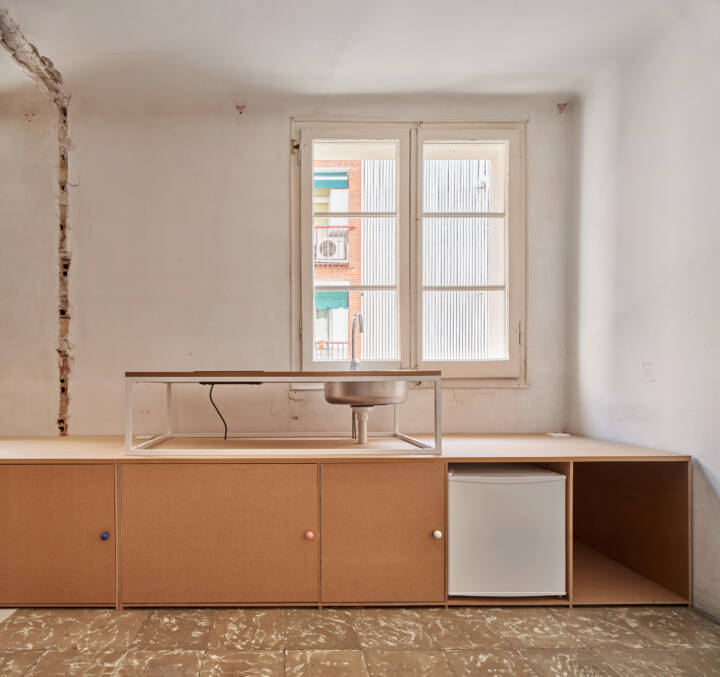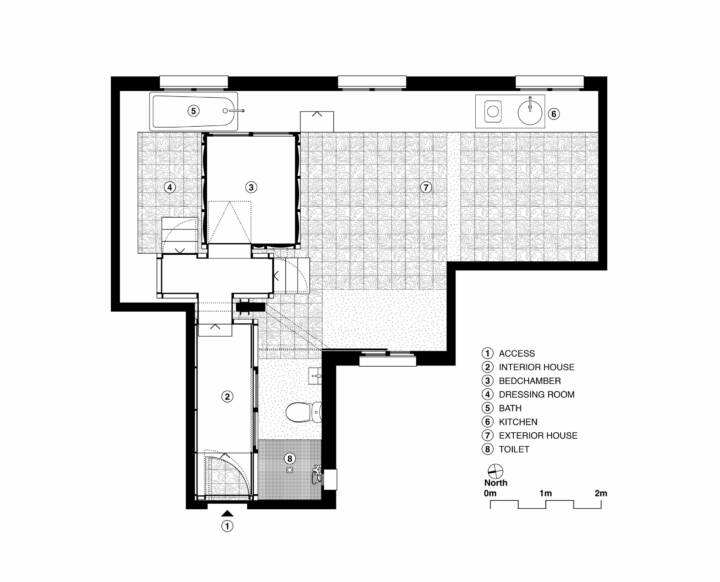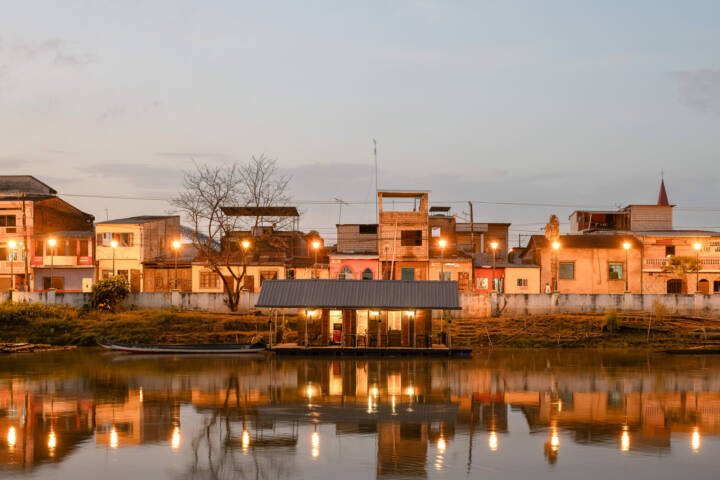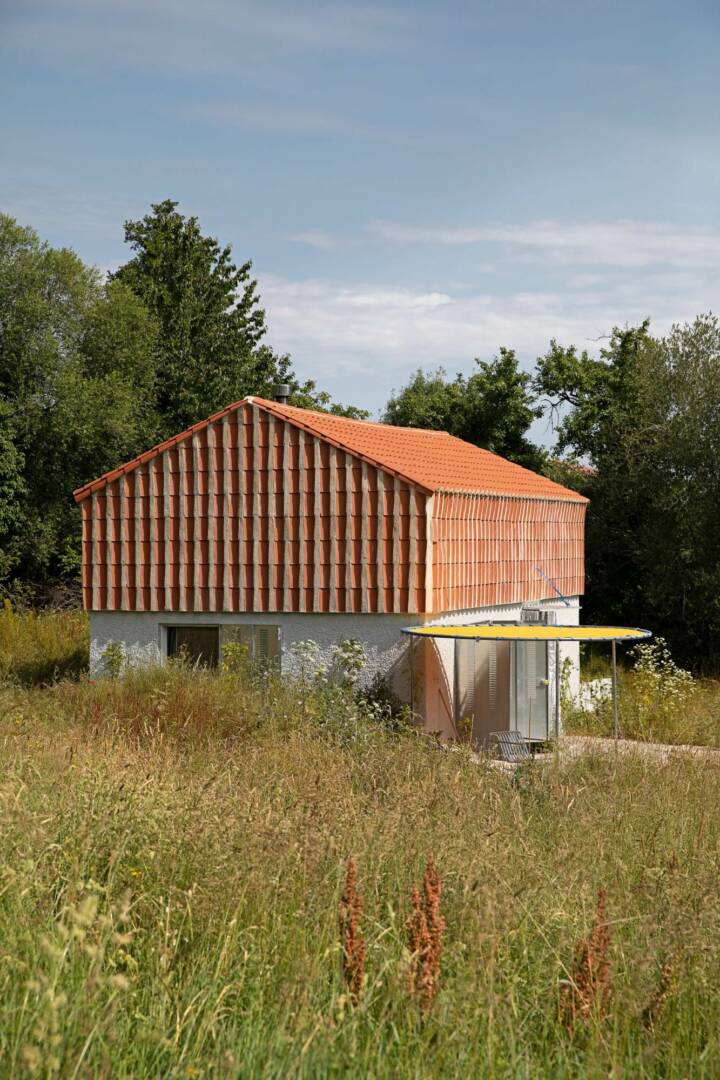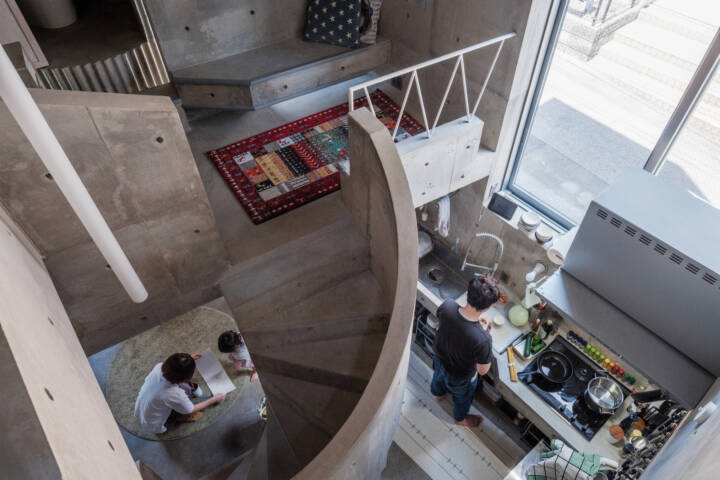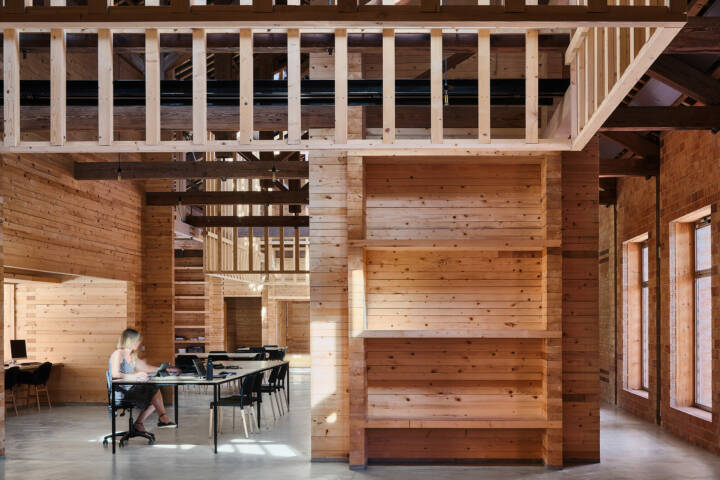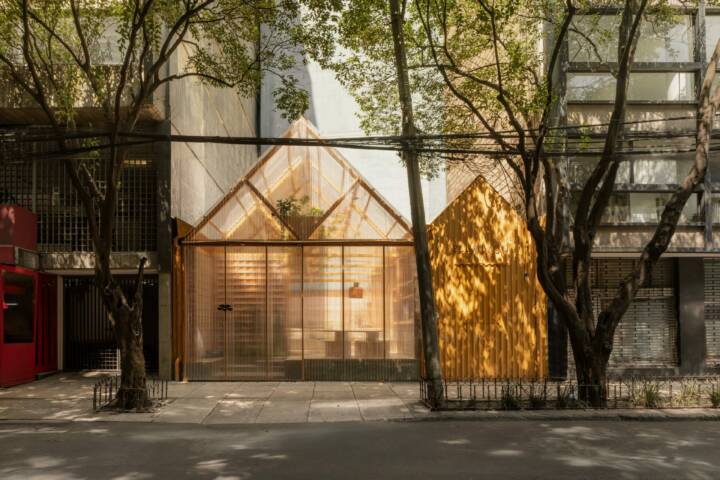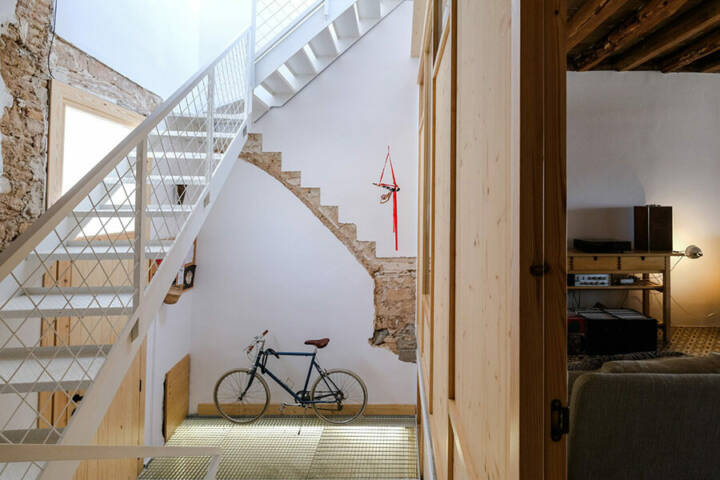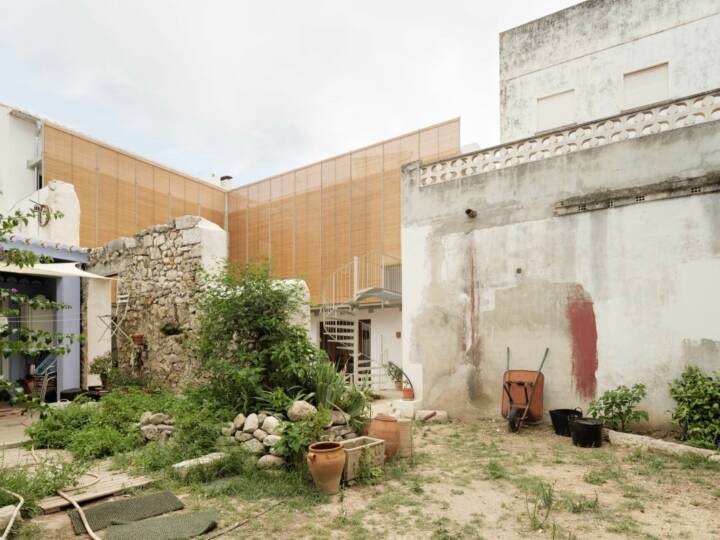Architects: TAKK / Mireia Luzárraga and Alejandro Muiño Photography: José Hevia Construction Period: 2022 Location: Barcelona, Spain
“10k House” is the refurbishment of a 50m2 flat located in Barcelona with a material execution budget of only 10,000 euros, but with the aim of updating the home towards new models of use and environmental awareness within the framework of the current energy crisis and climate change.
From this apparent dichotomy between the low budget available and the ambition to completely transform the home, the main decisions that articulate the project arise:
1_Work with thermal gradients for the functional and programmatic configuration of the house instead of the most usual through the combination of rooms and corridors. In the new proposal, a distribution is chosen where the climatic and environmental specificity of each space is different. As if it were the layers of an onion, the different spaces of the house are nested inside each other, from the coldest to the hottest, to take advantage of each layer of air and material without having to provide extra energy. This type of distribution, climatically diverse, allows for the unifyingof functional programs, climate, and efficiency.
Read MoreClose2_Elevation of the built elements of the house using recycled table legs allowing the free passage of water and electricity installations without the need to make grooves on the walls, thus reducing costs and working time.
3_Reduction of the material palette to the maximum: materials are chosen that maintains a cost/structural and energy efficiency ratio that is as balanced as possible. In this sense, the main materials used in the construction are standard MDF panels and local natural sheep wool.
4_Elimination of the item for new coatings (paint, plaster, tiles, etc.) after demolition and replacement by a simple thorough cleaning of floors, walls, and ceilings. The traces of the previous partitions, flooring, and electrical appliances are left visible after their demolition, thus saving both in the purchase of new materials and in execution times.
5_Hedonistic and playful vision of the bathroom and kitchen spaces that come to occupy the best parts of the house next to the facades. Well-lit and ventilated, they are understood as spaces to be used even in crowds. The kitchen element is understood as a space without associated gender. An open kitchen configuration encourages equitable use of its space by different members of the house regardless of their gender. The materiality of the kitchen is not different from that of the rest of the house, reinforcing this integration.
6_Self-construction. A reform exclusively made through “dry” assembly work is proposed that allows the incorporation of “non-experts” in its construction process. As if it were a piece of furniture, the different parts of the house (walls, ceilings, pillars) arrive at the site previously cut using CNC technology from the plans drawn by the architecture studio. Once on site, and simply using standard screws, they are assembled by the architects and the client according to a small instruction manual without the need for specialists.
Text provided by the architect.
